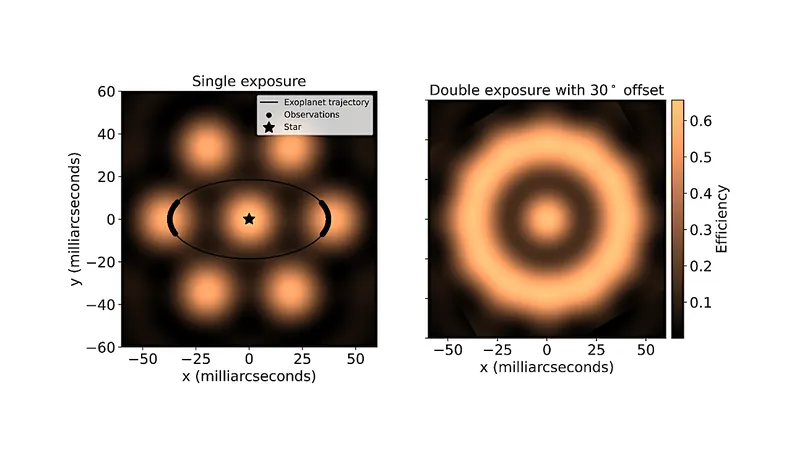
Unveiling Proxima b: The Future of Exoplanet Detection with RISTRETTO
2025-09-10
Author: John Tan
Revolutionizing Exoplanet Atmosphere Studies
The exploration of exoplanetary atmospheres stands at the forefront of modern astrophysics. Traditionally, researchers have relied heavily on transmission spectroscopy to glean insights into these distant worlds. However, an exciting evolution in technology is set to take us further into the cosmos: reflected-light spectroscopy.
Enter RISTRETTO: A Game-Changer in Astronomy
Meet RISTRETTO — a cutting-edge high-resolution integral-field spectrograph designed for the European Southern Observatory’s Very Large Telescope (VLT). This remarkable instrument is tackling one of the biggest hurdles in exoplanet research: the stark contrast between a planet and its bright host star. By harnessing advanced techniques like extreme adaptive optics, coronagraphy, and high-resolution spectroscopy, RISTRETTO aims to redefine our ability to detect and analyze exoplanets.
Proxima b: A Rocky World Under the Microscope
Focusing on the temperate rocky planet Proxima b, researchers have conducted comprehensive simulations to showcase the detectability of this intriguing world. By crafting high-resolution spectra for both the star and the planet, they incorporated real observational periods while factoring in the expected performance of the adaptive optics and coronagraph systems.
Innovative Techniques for Enhanced Detection
Utilizing the Pyechelle spectrograph simulator, the team managed to account for noise and various spectrograph effects. They then introduced a novel technique to filter the planet's signal from that of the star. This approach allowed them to fit multiple planetary models, gradually increasing in complexity.
Mapping the Cosmic Landscape
An innovative method was also developed to ascertain the orientation of the stellar spin axis, crucial for understanding the alignment of the planetary orbit in systems like Proxima b. Assuming the planet has an atmosphere similar to Earth's, the simulations revealed an exciting conclusion: RISTRETTO could potentially detect Proxima b in reflected light within a mere 55 hours of observation!
Unlocking Atmospheric Secrets
Moreover, after approximately 85 hours of observations, signs of molecular absorption from oxygen and water vapor could also be uncovered. This promises groundbreaking advancements in exoplanetary science, as RISTRETTO paves the way for reflected-light spectroscopy across a range of nearby exoplanets.
A New Era in Exoplanet Research
Overall, this research showcases how RISTRETTO could propel our understanding of distant worlds, offering insights into their orbital characteristics, true mass, and broadband albedo. The implications are vast—ushering in a new era of potential discoveries that could change our view of the universe.


 Brasil (PT)
Brasil (PT)
 Canada (EN)
Canada (EN)
 Chile (ES)
Chile (ES)
 Česko (CS)
Česko (CS)
 대한민국 (KO)
대한민국 (KO)
 España (ES)
España (ES)
 France (FR)
France (FR)
 Hong Kong (EN)
Hong Kong (EN)
 Italia (IT)
Italia (IT)
 日本 (JA)
日本 (JA)
 Magyarország (HU)
Magyarország (HU)
 Norge (NO)
Norge (NO)
 Polska (PL)
Polska (PL)
 Schweiz (DE)
Schweiz (DE)
 Singapore (EN)
Singapore (EN)
 Sverige (SV)
Sverige (SV)
 Suomi (FI)
Suomi (FI)
 Türkiye (TR)
Türkiye (TR)
 الإمارات العربية المتحدة (AR)
الإمارات العربية المتحدة (AR)